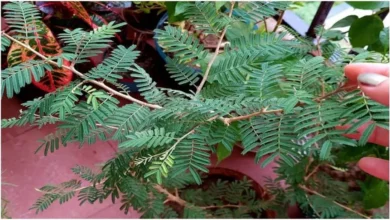How to grow a reetha plant at home? A detailed guide

Reetha (scientific name: Sapindus mukorossi) also known as soap nut or soap berry, is a wonderful natural cleanser and is highly valued in Ayurveda for its medicinal properties. Its fruits, called ‘soap nuts’, contain a natural surfactant called saponin, which makes it ideal to use as a chemical-free alternative to soaps, shampoos and detergents. Growing a reetha plant in your home is not only environmentally friendly, but it also gives you access to a natural and effective cleaning agent.
If you want to grow this versatile tree at your home, this detailed guide will help you
What is it and what are its advantages?
Reetha is a medium to large sized deciduous tree that can grow up to 15-20 meters. Its fruits, soap nuts, produce foam when exposed to water and are used for cleaning hair, skin, and clothing.
The main advantages of rye:
The natural cleanser: Acts as a chemical-free alternative to shampoos, laundry detergents and dish soaps.
Beneficial for skin and hair: Strengthens hair, protects from dandruff, and promotes the health of the scalp. It keeps the skin clean and hydrated.
Environmentally friendly: 100% organic and biodegradable.
Affordable: Nuts can be used several times.
ideal climate and soil requirements.
Low Maintenance: Once installed, it is drought-resistant.
The plant thrives well in tropical and subtropical climates, where there is ample sunshine and moderate rainfall. It is native to countries like India, China and Japan.
Climate: Prefers warm, humid climate and annual precipitation of 150-200 cm. Trees can be small in cold climates.
Soil: A well-drained sandy-loamy soil with a neutral to slightly acidic pH (5.5-7.0) is best. It grows well in well-drained soil.
How to grow from seed
The plant is usually grown from seeds. Sprouting seeds can be a bit of patience, but the right approach leads to success.
Preparation of seed (scarification) The outer covering of reetha seeds is very hard, which prevents germination. It is important to weaken it.
Lightly rub or scrape the hard covering of the seed using a nail file or sandpaper (called scarification). Be careful not to crush the seeds, only to weaken the upper layer.
Some people also advise to break the seeds lightly with a hammer, but caution is very important.
Soaking seeds After scarification, soak the seeds in warm water for 24-48 hours. Do not use boiling water; Let the water sit for 5 minutes so that it cools down a bit but remains warm. You can use a vacuum-insulated thermos to keep the water warm. This process activates germination.
also read :- Shaniwar Ke Upay: – Do these measures on Saturday, you will get rid of the problem
Sowing seeds
The best time: From spring to early summer (February-July).
Use good quality potting soil (not clay) that has good drainage.
Sow the seeds about 2.5 cm (1-2 inches) deep.
Choose a deep pot, as the roots of the reetha tree go straight down (tap roots).
Keep the pot in a place where there is no direct sunlight, but it can get rain water.
Keep the soil moist, but avoid waterlogging (this can lead to fungal growth).
Avoid putting fertiliser in the soil before germination, as high levels of nitrogen can prevent germination.
Sprouts: The germination process can take 1 to 3 months (in summer). The colder months will require more patience. As soon as the seedling appears, replant it in a large container or plant bag to protect its long main root.
Care of the plant
Sunshine: The plant needs 6-8 hours of direct sunlight every day for healthy growth. Keep it in a sunny place.
Water: Be sure to water regularly, but don’t over water. Allow the soil to dry slightly between watering. Reduce watering in winter. It is also beneficial to spray water on the leaves often.
Food: Use organic manure or cow dung twice a year. This will provide nourishment to the plant.
Pruning Prune weak or dry branches annually to promote better growth and fruit production.
Pest and Disease Control: The plant is usually insect-resistant, but can sometimes be affected by mealybugs or fungal infections. Use neem oil sprays or organic insecticides as required.
Pot Cultivation
Reetha can become a large tree, so it is possible to grow it in pots, but for this it is necessary to take care of certain points:
The big game: You will need to use a pot that is at least 20-24 inches wide and deep, and as the plant grows, it may need to be planted in a larger pot.
Regular pruning: Regular pruning will be necessary to control its size in the pot.
The initial care: After germination, it is advisable to keep it in the pot for the first year or more.
Time of harvesting and fruiting
The tree usually begins to bear fruit 5-6 years after planting. In some cases, it may even take 9-10 years.
Fruits ripen during late summer or early autumn (October-December) and turn dark brown.
Collect the ripe, browned fruits.
Dry the fruits in the sun and then separate the shell and seeds before using.
Store dried fruits in an airtight container for long-term use.
Conclusion
Growing reetha plant at home can be a rewarding experience, providing you with a sustainable and natural product. With a little patience and the right care, you can successfully grow this wonderful medicinal tree in your garden or on the terrace and enjoy its many benefits.




